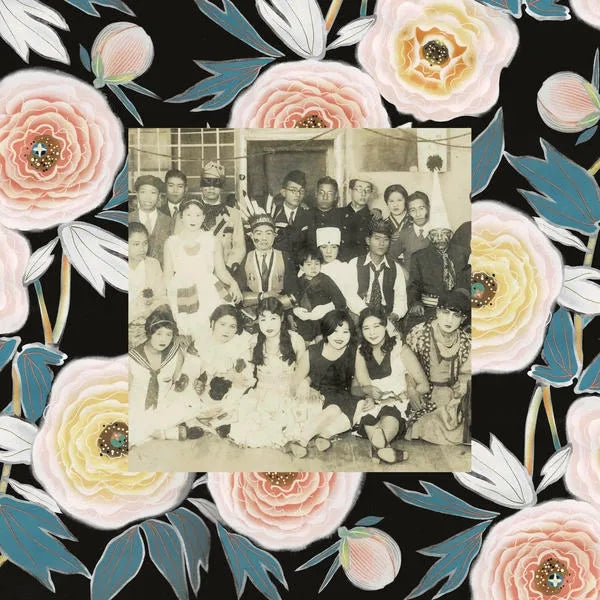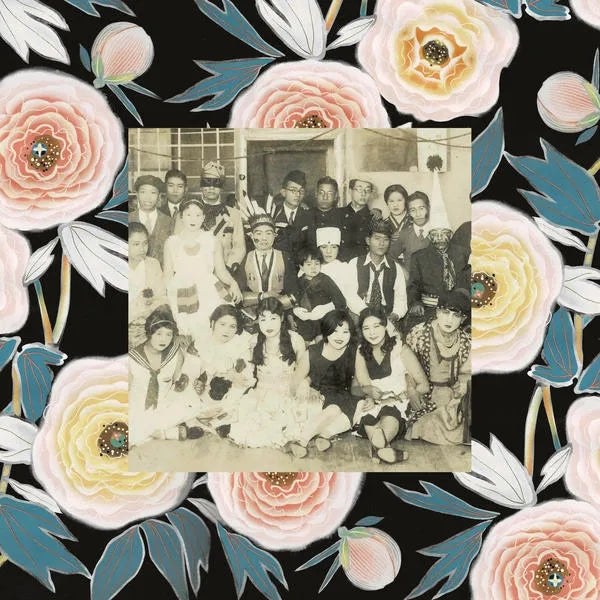NTS DJ, label boss and fabled collector Howard Williams lands on DDS with an etheric communique under his Japan Blues moniker, inspired by early C.20th Min'yō folk and avant-dub, richly spirited with field recordings and ghostly ephemera.
Six years since his debut Japan Blues album ‘Sells His Record Collection’, Williams is back - and it’s been worth the wait. Based around enka and minyo recordings made with London based singer Akari Mochizuki and Tsugaru shamisen master Hibiki Ichikawa at London’s Earthworks studio back in 2018, Williams adds field reco …
Read More
NTS DJ, label boss and fabled collector Howard Williams lands on DDS with an etheric communique under his Japan Blues moniker, inspired by early C.20th Min'yō folk and avant-dub, richly spirited with field recordings and ghostly ephemera.
Six years since his debut Japan Blues album ‘Sells His Record Collection’, Williams is back - and it’s been worth the wait. Based around enka and minyo recordings made with London based singer Akari Mochizuki and Tsugaru shamisen master Hibiki Ichikawa at London’s Earthworks studio back in 2018, Williams adds field recordings made while traveling through Japan, inviting The Dengie Hundred to co-produce, bringing his own sound worlds into the mix.
The two spent several months shuttling ideas back and forth, processing mixes and adding environmental recordings, like snatched penny whistle melodies or the familiar whirr of an extractor fan. Singer Tamami Pearl is the final piece of the puzzle, providing an almost imperceptibly breathy aura to proceedings. The obsessively researched archivist’s resolve is still very much present, but the processing style and overall sound here is more faded than the Japan Blues of yore, transmuting discernible sounds into magickal textures that boil and bubble until all that’s left is vapour.
On 'Sazanka, Hokkai Bon Uta', Japanese vocals are dubbed into bare syllables, juxtaposed with flute improvisations and muddy whirrs. Eventually, the instrumental elements turn to noise, like some shortwave radio transmission slowly falling out of range. Environmental sounds become uneven, clunking percussive currents offer a sort of dream logic, morphing into faint choirs. In the final third, Williams pulls away the veil almost entirely.
The album's most compelling section is the side-long 'Soran, AIzu Bandai-San, Shimabara Lullaby'. If you've heard Robert Turman's 1981 album "Flux" - a reel-to-reel recorded slo-mo kalimba and piano masterpiece - you'll have an idea of how this one rolls. Williams and The Dengie Hundred work into the source material like modelling clay, dubbing and distorting shamisen twangs and echoing vocals into half-speed, dissociated dream visions.
It's not Ambient by any means, but there are undoubtedly traces of Brian Eno's earliest, most crucial experiments. It's not Folk music either, but Williams' deep obsession with Japanese traditions allows him to integrate sounds holistically, provoking a conversation rather than simply cherry picking aesthetic decorations. He works like a dedicated DJ, giving The Dengie Hundred room to tweak the spaces in-between. Together, they create an atmosphere that's fiendishly hard to put into words, and even harder to forget.
If you're into tape-damaged industrial experiments (think Skaters, Spencer Clark, Aaron Dilloway et al), the surrealist global exploration of labels like Stroom, or simply after a new perspective on Japanese folkways, "Japan Blues Meets The Dengie Hundred" is unmissable.
Read Less



